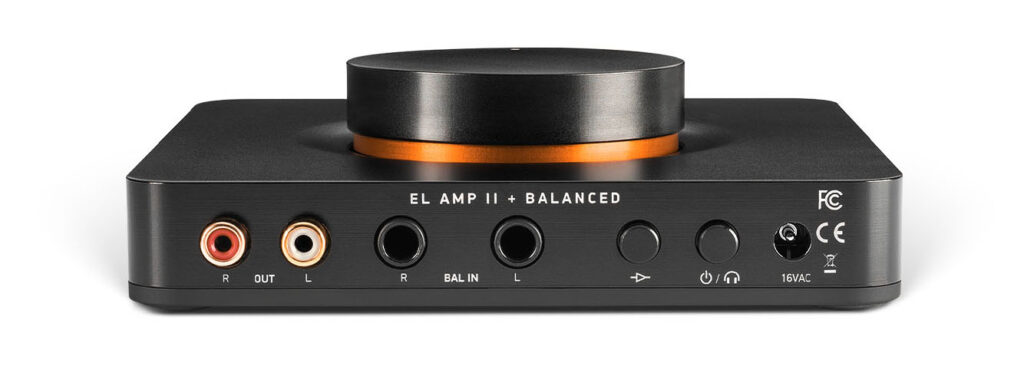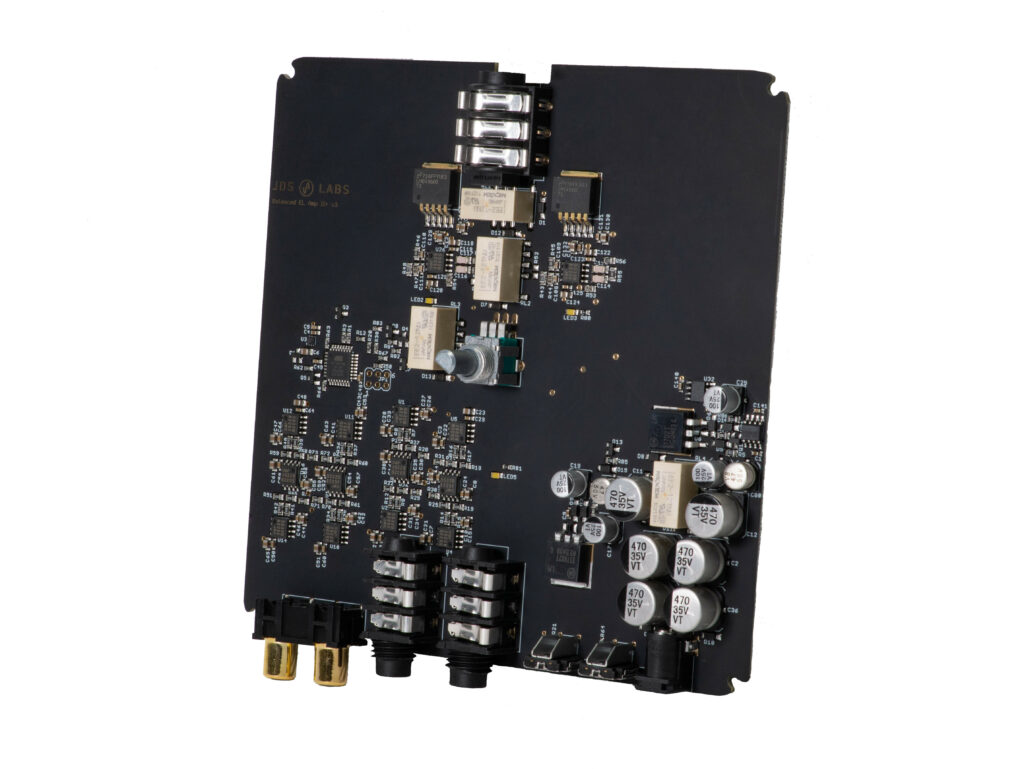JDS Labs EL Amp II+ Balanced
We’ve historically avoided building balanced amplifiers because well designed, single-ended amplifiers are all most need in a home audio setup. Yet, a growing number of customers have asked for balanced inputs. Maybe you have an audio interface or source with XLR or TRS outputs, and have passed on EL Amp II+ because there’s no ideal way to connect to RCA Inputs.
EL Amp II+ Balanced is for those who require balanced connectivity. Functionally equivalent to its unbalanced sibling, EL Amp II+, the amplifier is housed in a precision machined aluminum chassis, with plentiful power, button activated preamp RCA outputs, and a beautiful knob.
Hardware Overview
Balanced TRS
We chose balanced TRS input jacks because most customers requesting balanced inputs need to connect to audio interfaces equipped with TRS outputs. Additionally, TRS jacks share the same mounting height as other components on the rear of the amplifier, forgoing the need to double enclosure height just to accommodate XLRs.
Balanced Input, Single-Ended (SE) Output
Headphone drivers are inherently single-ended and we actively discourage balanced headphone outputs. Thus, EL Amp II+ Balanced provides 6.35mm (1/4″) Headphone output.
The balanced inputs are fed to quad buffers. The eight signals are then summed by quad balanced-to-SE converters, whose outputs are paralleled once more to minimize distortion products prior to headphone amplification. In total, 24 low-noise opamps are responsible for balanced-to-SE conversion.
Performance
It’s often assumed that Balanced connections must yield higher benchmark performance. This is a misunderstanding. We began prototyping balanced amplifiers years ago, and more often than not, there is no external noise to differentially cancel out, so a balanced amplifier yields no benefits while requiring more components in the signal chain. When no input noise is present, a single-ended amp will generally outperform the same amp equipped with balanced input circuitry.
For balanced signals, source impedance must be overcome in not one signal per channel, but two signals, identically. Any differential input error creates distortion products, thus, paralleled buffering helps average out potential errors. As more components and passives are involved, the base noise floor tends to rise, meaning power supply and amplification circuits must be designed for even lower noise than the average SE amp. With all of this in mind, it’s easy to understand why SE amplifiers perform so well (a case of “less is more”).
As explained in the recent Element III release notes, our goal is not to set benchmark records. SINAD > 110 dB is more than you should ever need! Today’s published performance of EL Amp II+ Balanced is a worst case snapshot, which will only improve as preferred passives for the differential summing circuitry become available. Obtaining precision resistors is a serious challenge these days, given global shortages.
| EL Amp II+ Balanced | |
| Frequency Response, 20Hz-20kHz | +/- 0.01dB |
| SINAD @ 4VRMS, 1kHz | > 114 dB |
| IMD SMPTE | -94 dB |
| Noise (20-20kHz) | 1.95 μV |
| Crosstalk @ 10kHz via 1/4″ Output | -84 dB |
| SNR (20-20kHz) | 126 dB |
| Dynamic Range (AES17) @ 4VRMS | 125 dB |
| Input Impedance | 47 kΩ |
| Output Impedance | < 0.7 Ω |
| Max Continuous Power @ 600 Ω |
153 mW (9.6VRMS)
|
| Max Continuous Power @ 300 Ω |
288 mW (9.3 VRMS)
|
| Max Continuous Power @ 32 Ω |
1.2 W (6.27 VRMS)
|
Availability
EL Amp II+ Balanced is In Stock and ships today! Samples to reviewers are in route.


Refreshingly balanced (no pun intended) and honest discussion on the realities of balanced connections. We, as the general public are usually fed information as to why “balanced is better”. But here we see that there is another side to the story.
I have a 1st gen El Amp– is there any actual new improved output performance or specs in the non-balance El Amp II?
Thanks!
@Frank – Yes, performance has come a long way from an original EL Amp to today’s EL Amp II+ (actually the 3rd generation). The noise floor and THD+N have improved by more than an order of magnitude.
John-
Wow! I don’t drive really exotic headphones (Ananda and Audeze LCD-X) — but the original El Amp was already so silent and dynamic it doesn’t seem possible to eek out another order of magnitude improvement but hey OK SOLD!
They’re an incredible bargain too; amazing bang to buck ratio! I appreciate your work and fine products,
Best Regards,
Frank
Are there any plans to upgrade the knob on the Element amps to the same optical setup on the Element III MK2? I currently have an Element II with some noticeable play and wobble. Was looking to upgrade or change up my setup and was wondering if its worth the wait for an EL Amp III
@Zechariah – We have no such plans because Element III MK2 is built with a discrete encoder, while EL Amp requires an analog potentiometer. These methods are physically incompatible. Development is focused on Element at this time.
@John
Is there any issues if I connect RCA-TRS cable there?
Where cold wire should go: GND or Floating?
Yes, you may use RCA-to-TRS cables. Leave the wires floating if you are unsure. Some sources allow you to ground the signal, but this should not be attempted unless it is safe to do so for a given source.